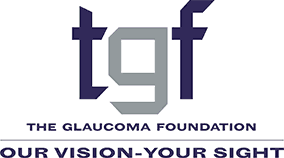Summary
Dr. Barbara Wirostko discusses home tonometry usage by patients and doctors.
Question answered by:
Barbara Wirostko, MD, FARVO

As we know, IOP fluctuates constantly between doctor visits, throughout the day, night, and throughout the year. The more frequently your IOP is measured, the better the overall picture your doctor will have of your eye pressure variability and maximum IOP. We always look to learn and treat the highest eye pressures.
When we initially talked about the use of the iCareHOME2 tonometer we as clinicians were primarily having patients use it for one week for the purpose of diagnosis — to rule out or rule in glaucoma and identify that high IOP especially if there was evidence of progression.
Now we have patients using the device for other outcomes too. It can reveal when patients are well-managed and also reveal dangerous fluctuations, for example, after glaucoma surgery procedures, when the eye tissue can start to scar or a “bleb” stops working as well. You can’t bring the patient back to the office every day or every two days, but monitoring pressure at home can reveal fluctuations not evident during one office visit especially weeks to months after surgeries.
Taking pressure readings at home is also very helpful for patients who seem to be progressing despite “normal” or well controlled IOP values in the doctor’s office. That’s true for patients with low-tension or normal-tension glaucoma, whose disease may be progressing even though their eye pressure is not high. At-home readings can assist in treatment decision-making and even identify IOP spikes that are not “normal.”
The iCareHOME2 is also facilitating some important studies. In one of them, involving 400 patients at the Moran Eye Center here in Utah and patients at the Wilmer Eye Institute at Johns Hopkins, we are trying to identify who spikes and why. We’re also trying to determine at what time of day patients spike and asking how much time is needed using a home tonometer to determine the majority of the variability.
Another study at Moran involves collecting data from patients who have used the device to better understand its predictive value before and after laser surgery. Such studies can inform practitioners regarding the utility of the iCareHOME2 and its role in the management of glaucoma.
MyEyes, which I co-founded, is one of three companies that rents the iCareHOME2. (Some doctors lend the devices to patients.) We provide a support staff of patient coaches and ambassadors who work with the patients. They do everything, including helping the visually impaired so they can use the device. All the doctor has to do is prescribe the device and read the results. It’s no different than reading any other test results.
We’re also making baby steps in our ongoing efforts to get insurance companies to reimburse for the device. Every insurance carrier is different. But MyEyes now has a DME (Durable Medical Equipment) License and a NPI (National Provider Identifier) number so the insurance companies recognize us as a preferred DME provider — and some of our patients have been reimbursed by United Health Care.
Monitoring IOP at home has been life-changing for so many of our patients. I believe remote monitoring should be the standard of care for this chronic disease, similar to a blood pressure monitor or a glucose monitor.
